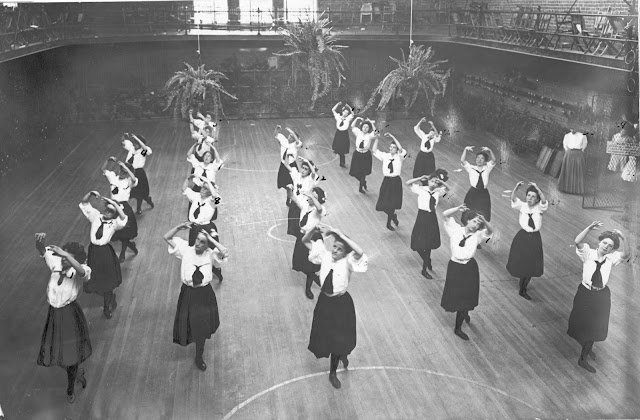From “The Week in San Jose Society”
The hop given on Friday evening at Library Hall was the opening one of the series given by the Misses Lewis during each season. These hops originated with the idea of giving the pupils of the dancing classes an opportunity to practice their newly learned steps with other dancers, and, in mingling with others, gain the ease and grace of manners that comes in no other way.
It is a pity that the word “manners” should be confused, as it often is, with the less essential term, “etiquette.” Manners are the same the world over, while etiquette is simply a cloak which may vary according to time and place. The world is so over-stocked with so-called “books of etiquette,” all loaded with “don’ts” that no human being is likely to do, and “do’s” that are equally ridiculous, that one wearies of the word, but manners are as necessary as when, long ago, it was written “manners maketh man.”
Good manners consist of a ready acknowledgment of the rights of others, a readiness to concede in the way of kindness, a cheerful readiness and evident pleasure in fulfilling all the little duties of social intercourse— pleasure in the pleasure of others. Of course, the birthplace of this teaching must be the home, but the practical application must be elsewhere, where the mingling with others is on a larger scale than the home circle affords, and where the intercourse is of a more formal nature.
Athletics have done a great deal toward bringing young people together in a wholesome band of comradeship, but the question now is to counteract the effect of too much equality. Longfellow, in one of his poems, tells of a statue on three sides of which is the inscription “Behold,” while on the fourth side is written the warning “Be not too bold,” so, while we preach athletics we must at the same time guard against the evils they bring in their train.
Not long ago, a well known San Jose woman, who has devoted her life to the training of young people, complained of what she called “foot-ball manners.” It is, indeed, deplorable if the rosy cheeks and strong physique of this generation must be bought with a sacrifice of courtesy and chivalry. It is here that the dancing school steps in; a strong counteracting influence, where, while their bodies are acquiring grace and motion the minds of the boys and girls are being imbued with that grace of thought which wins for them the title of gentle-men and gentle-women. — San Jose Mercury News, 1901

No comments:
Post a Comment
Note: Only a member of this blog may post a comment.